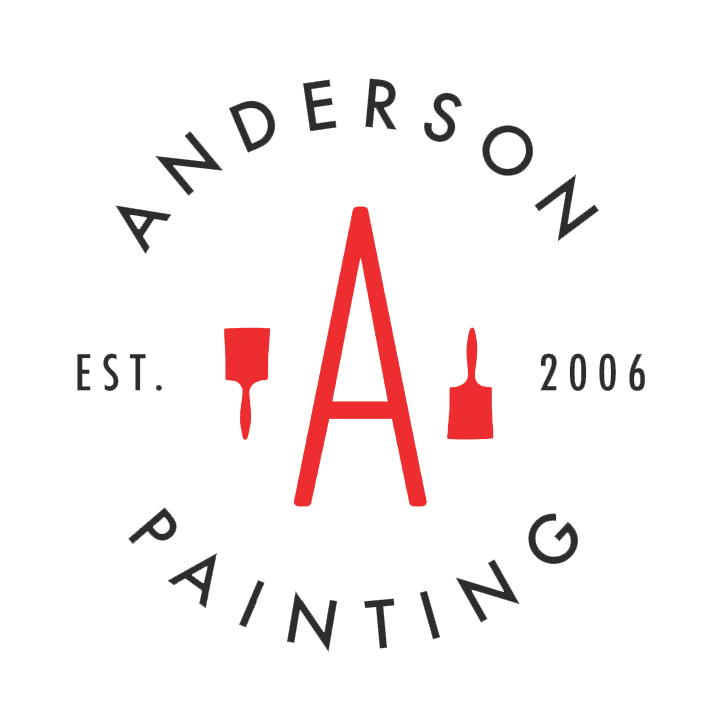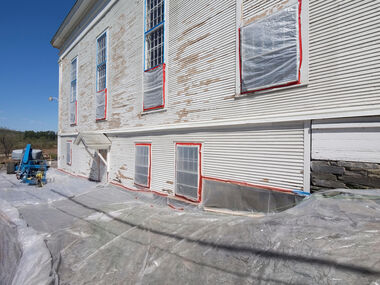Why Your Paint Color Looks Different Than You Expect

A paint color may look different in the store and on your wall, depending on various factors. This article will discuss the factors that affect a paint color’s appearance and strategies for color matching to help you find the right paint color for your project.
Choosing Paint Colors
Incorporating new colors is one of the best ways to transform your home. However, choosing said colors isn’t always easy. Even if you have a clear picture in mind, there are simply so many gradients on the color spectrum to consider. If you stare at color samples long enough, you might question your vision entirely. But things get more complicated from here.
Once you finally decide on a color and hire Raleigh house painters to apply it, you might be faced with another issue: the color of the finished paint job somehow looks different than you thought it would. This phenomenon is quite common and may occur for several reasons. Let’s examine why the colors you choose might not always look as advertised and what you can do to prevent this from happening.
It’s Partly in the Mix
Before we discuss more complex things like lighting and psychology, consider that the color issue might be with the paint itself. The paint needs to be stirred before applying it to a surface so that the binding agents and pigment properly mix together. This process is typically done in the bucket itself, but if you’re painting large areas, you’ll probably be using more than a bucket per coat. If you don’t mix all the paint together from the beginning, you may end up with slightly different hues from each bucket. For color consistency, combine the paint and mix it in one large container before applying it.
Sheen and Light
If you’ve ever walked out of the sun into a shady area, you know that light affects the way things look. Paint colors are obviously not immune to this effect. The way a room is lit will ultimately determine how the colors appear. This might change throughout the day as natural light enters and leaves the room. Different light fixtures and intensities will also affect the appearance.
It’s important to note that the paint sheen will amplify or nullify these interactions with light. For instance, matte or flat finishes absorb more light than they reflect, meaning their colors will look relatively consistent in most lighting conditions. Conversely, high-gloss paint reflects a lot of light, meaning its appearance will depend largely on the amount of light bouncing off it. Knowing this ahead of time may help you choose your colors and sheen with more confidence.
Differences After Drying
Paint colors also shift a bit as the material dries. Depending on the color and sheen, the dried paint might appear darker or lighter than it appeared when wet. Of course, the sample swatch should indicate what the color will look like after the paint has dried. But again, lighting will ultimately play a role. This is why it’s important to test the color by painting a sample of it in the room in question with the proper lighting. Once the sample has dried, you can get an idea of how the color will truly look in this context.
What the New Coats Are Covering
Unless you’re repainting on a truly blank slate (a white wall) or removing the old paint entirely, the pre-existing colors underneath the new coats of paint may affect how the new color appears. This is especially true if the underlying colors are darker than the new ones. In these scenarios, it’s crucial to use colored primer and two to three coats of paint to completely cover the old color and prevent it from affecting the new one. This is more work for you or your Raleigh painting service, but it’s worth it.
Eyes Can Deceive
Everything we see is processed in our brains. This is why two people can have completely different interpretations of the same situation. Plus, different physiology affects how each of us sees color, depending on how many active rods and cones we have in our eyes. Simply put, our eyes can deceive us. You might recall an optical illusion (or a variation of it) where a thick line, resting on top of a gradient background, appears to be lighter on one side and darker on the other. Take the background away and suddenly it’s revealed the line is one solid color.
It turns out this fun little trick has real-life implications. When painting a room two colors, for instance, one color might make another appear darker or lighter than it actually is. This might happen when you’re browsing paint samples as well. If you look at one color right after another one, that previous image might affect the way you view the current one. Overcoming your brain’s tendencies isn’t exactly easy or even possible. However, being aware of the ways your mind might trick you at least gives you a chance to better evaluate the colors you’re choosing.
Tips to Get the Perfect Paint Color Match
Fortunately, there are some old-school and high-tech ways to find the exact shade of color you’re looking for. Let’s explore how to get the exact paint color match for your project.
Taking Samples and Bringing Them to Experts
Planning to use the same color as the existing paint? The easiest way to color-match paint is to remove a chip from your wall and bring it to your local paint store or a specialist. They may use a spectrophotometer to analyze the chip and match it to their closest paint color. This color-matching approach also works for paint touch-ups.
Using a Color Matching Technology
Many leading paint brands provide downloadable or online paint apps to help their customers with paint color matching. Most of these color-matching tools are also user-friendly. They only require you to upload a paint color, and they will generate potential color matches.
Testing the Paint
Once you’ve found your perfect paint color match, test it against your current paint color. But don’t just bring a swatch home and compare it against the existing paint color. Swatches are small, so it’s hard to envision what the color will look like on a bigger scale. Instead, buy sample-sized paint jars and paint your surface at least as big as a square foot. Be sure to prime the surface first. This will give you a clearer picture of how the room will look once the paint job is done. Test the paint patch against different lighting arrangements and see how it looks at different times of the day.
Consider Finish Type
As mentioned, sheen also impacts how a color looks. So don’t forget about this factor when finding matches for your existing paint. Ensure it’s the same as the current sheen to achieve a seamless paint job.
Let Us Help!
Light, chemistry, psychology, and biology all play a part in how we perceive color. These factors can certainly make choosing the right colors difficult. Fortunately, Anderson Painting contractors can help. Our team has plenty of experience working with different paint colors and understands the factors involved in determining their appearance. Our painters can help you find the right paint color and finish for your project. Please feel free to talk to our team or explore our resources to discover how to color-match paint today.
To learn more about us and all our services, call Anderson Painting today at 919-610-1855 or email us at info@andersonpaintingnc.com! You can also request a free estimate here.




